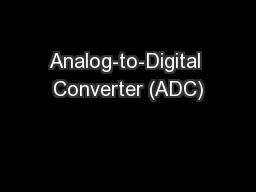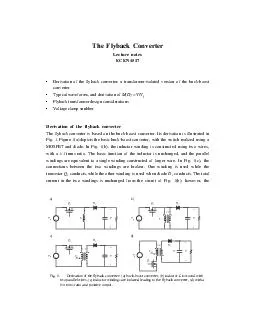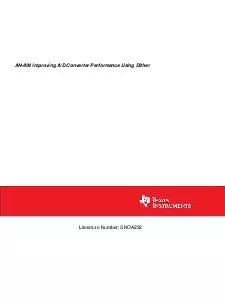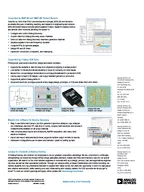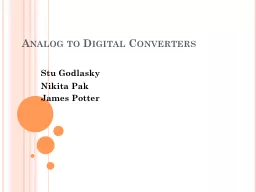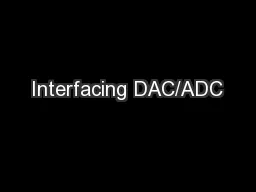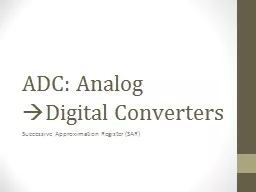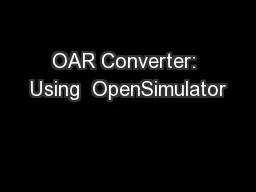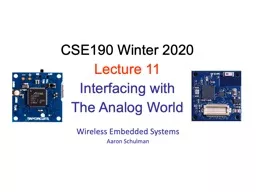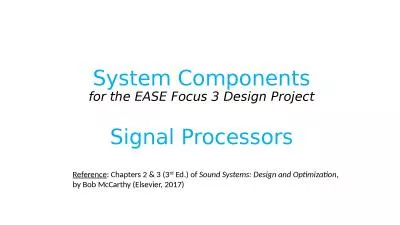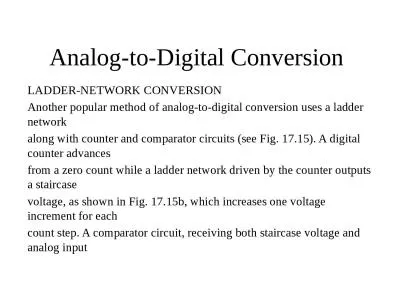PPT-Analog-to-Digital Converter (ADC)
Author : pamella-moone | Published Date : 2015-09-20
Introduction to Mechatronics Fall 2012 Craig Woodin Ali AlSaibie Ehsan Maleki Background Information What is ADC Conversion Process Accuracy Examples of ADC applications
Presentation Embed Code
Download Presentation
Download Presentation The PPT/PDF document "Analog-to-Digital Converter (ADC)" is the property of its rightful owner. Permission is granted to download and print the materials on this website for personal, non-commercial use only, and to display it on your personal computer provided you do not modify the materials and that you retain all copyright notices contained in the materials. By downloading content from our website, you accept the terms of this agreement.
Analog-to-Digital Converter (ADC): Transcript
Download Rules Of Document
"Analog-to-Digital Converter (ADC)"The content belongs to its owner. You may download and print it for personal use, without modification, and keep all copyright notices. By downloading, you agree to these terms.
Related Documents

